Some time ago I worked as a reporter for a news agency and one day I had to go to a place that I had heard many stories about: the General Cemetery of the South, in Caracas, the capital of Venezuela.
Fui con un fotógrafo y al llegar nos esperaba el director de la necrópolis, además ya que por ahí la zona no es muy segura, unos policías nos acompañaron hasta la parte alta, donde nos iban a hablar de un proyecto de mejoramiento del lugar. Desde arriba podíamos entender mejor lo que se iba a hacer, además el fotógrafo podría hacer unas buenas tomas panorámicas.
I went with a photographer and upon arrival the director of the necropolis was waiting for us, also since the area is not very safe around there, some policemen accompanied us to the upper part, where they were going to talk to us about a project to improve the place. From above we could better understand what was going to be done, in addition the photographer could take some good panoramic shots.
Hice la entrevista, el fotógrafo las imágenes y luego nos llevaron a hacer un recorrido general por el cementerio, que en ese momento (y creo que ahora también) estaba bastante deteriorado, aunque obras de arte como las estatuas y esculturas de algunas de las tumbas más antiguas se resistían a dejar de llamar la atención.
I did the interview, the photographer took the images and then they took us on a general tour of the cemetery, which at that time (and I think now too) was quite run down, although works of art such as statues and sculptures in some of the oldest tombs were reluctant to fail to attract attention.
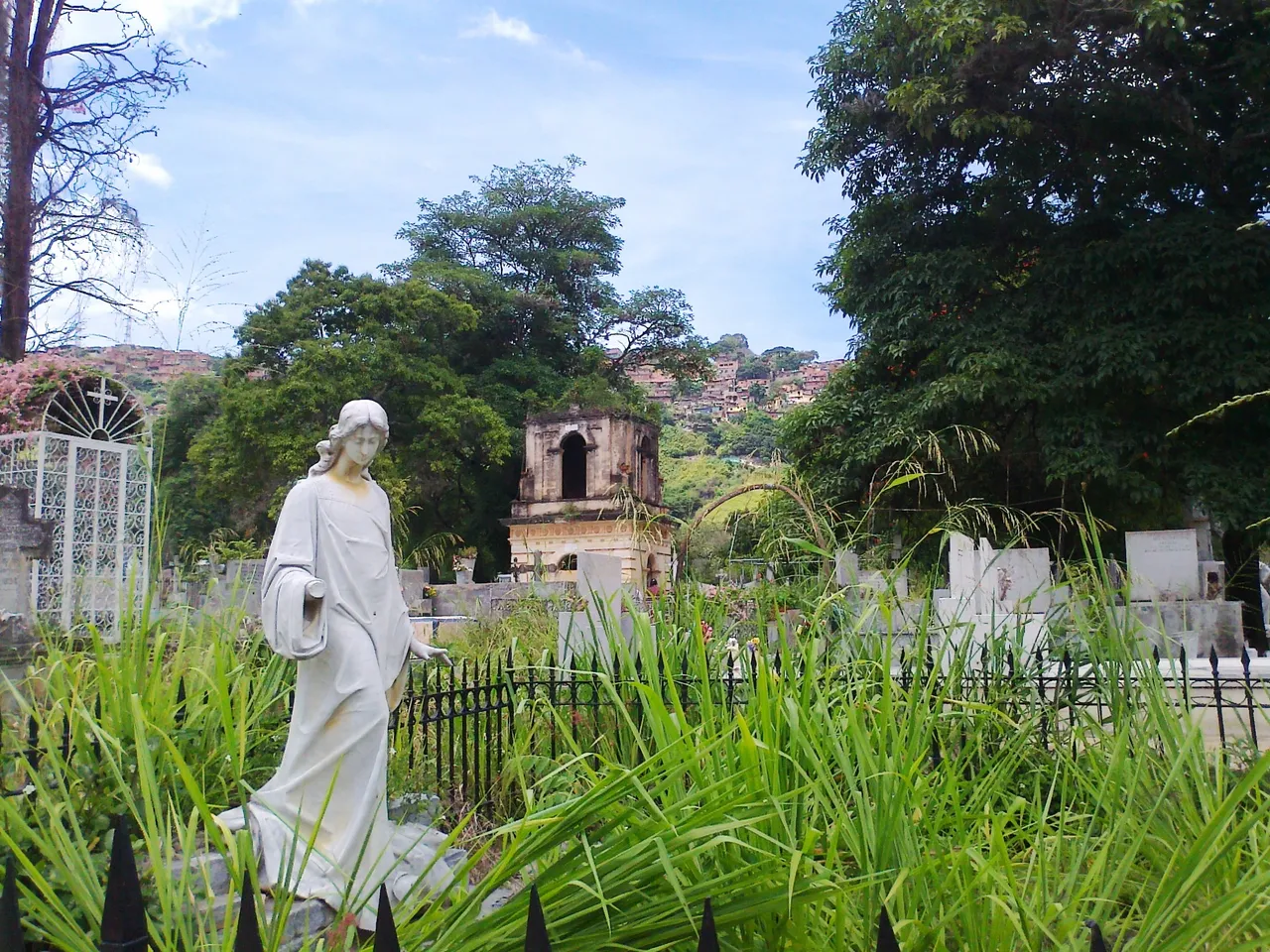
Su aspecto, como el de muchas viejas necrópolis, es de parque, y mientras estuvimos ahí vimos a algunos estudiantes reunidos alegremente bajo los árboles.
Its appearance, like that of many old necropolises, is of a park, and while we were there we saw some students gathered happily under the trees.
Fundado en 1876 en la zona sur de Santa Rosalía, que en esa época no estaba poblada, es el cementerio más grande de Caracas y una de las obras públicas más importantes del presidente Antonio Guzmán Blanco, quien quería llevar a un solo sitio los 17 camposantos que había en la capital.
Founded in 1876 in the southern area of Santa Rosalía, which was not populated at that time, it is the largest cemetery in Caracas and one of the most important public works of President Antonio Guzmán Blanco, who wanted to bring the 17 cemeteries in the capital to one place.
Tiene una superficie de 246 hectáreas y según registros históricos el terreno le pertenecía a una señora alemana llamada Grumel. Como era muy productivo, conocían el sitio como “Tierra de Jugo” porque allí había siembra de naranjas, mandarinas y caña. Actualmente muchas personas que viven en los alrededores mantienen algunos sembradíos y hay mangos, guanábanas y cambures.
It has an area of 246 hectares and according to historical records the land belonged to a German woman named Grumel. As it was very productive, they knew the place as “Land of Juice” because there were crops of oranges, mandarins and sugarcane. Currently many people who live in the surroundings maintain some crops and there is mangoes, soursop and bananas.

Una de las particularidades del Cementerio General del Sur es que poco a poco fue rodeado de viviendas, barrios que fueron fundados entre 1940 y 1950 por personas que trabajaban en el camposanto, la mayoría procedentes del interior del país que se internaron en la montaña para construir sus viviendas.
One of the peculiarities of the General Cemetery of the South is that little by little it was surrounded by houses, neighborhoods that were founded between 1940 and 1950 by people who worked in the cemetery, most of them from the interior of the country who went into the mountains to build their homes.
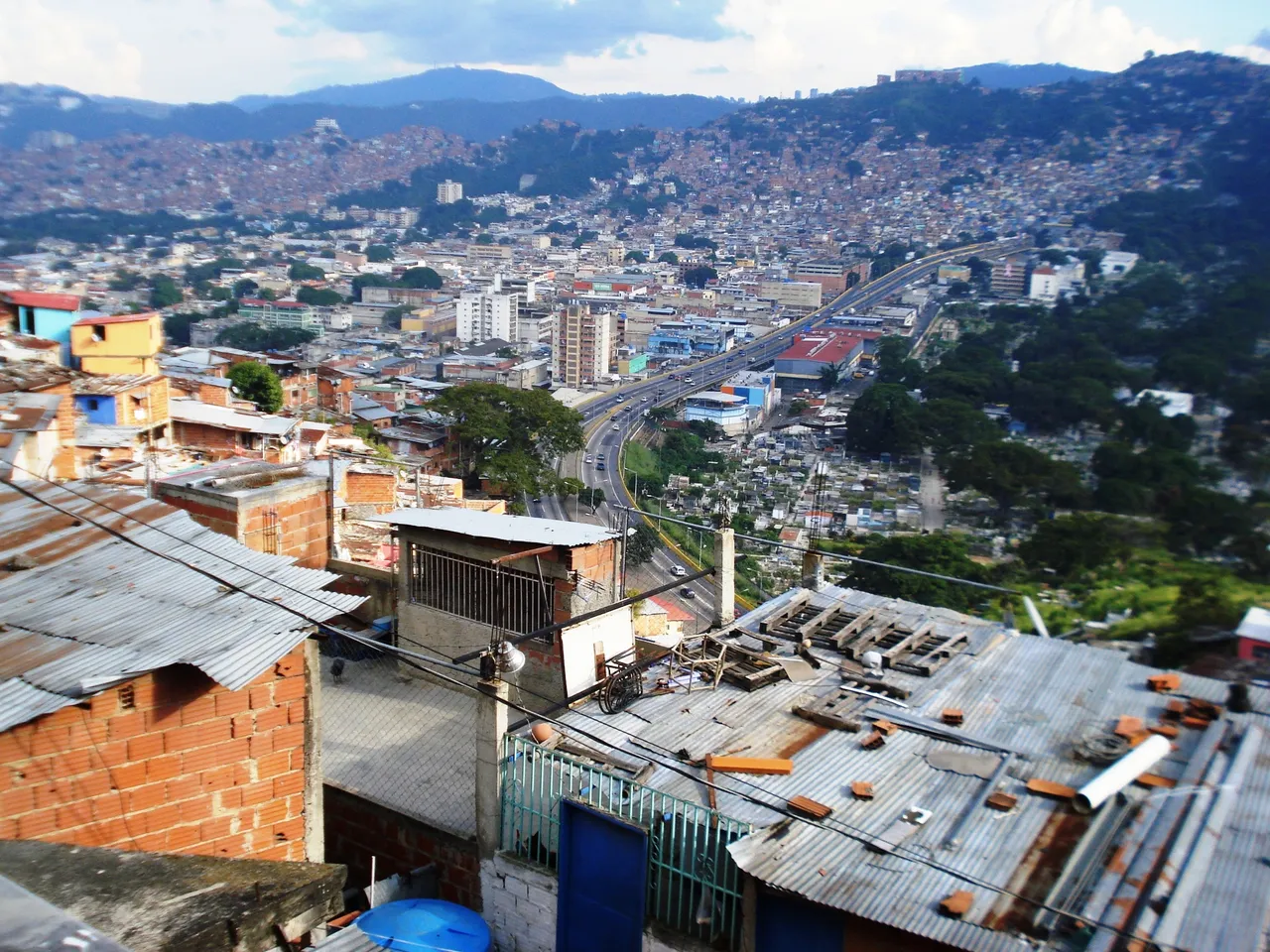
Además, hoy en día la dinámica de los alrededores del cementerio le ha quitado algo de la paz y tranquilidad que caracteriza a estos lugares, ya que se convirtió en una de las zonas comerciales más movidas de Caracas, allí se pueden comprar todo tipo de mercancías al mayor o al detal.
In addition, nowadays the dynamics of the surroundings of the cemetery has taken away some of the peace and tranquility that characterizes these places, since it became one of the busiest commercial areas in Caracas, there you can buy all kinds of merchandise wholesale or retail.
Pero volviendo a nuestro recorrido por el cementerio, vimos que allí están enterrados reconocidos personajes venezolanos como los pintores Armando Reverón y Martín Tovar y Tovar, los escritores Miguel Otero Silva, Rómulo Gallegos y Aquiles Nazoa; los poetas Andrés Eloy Blanco y Juan Antonio Pérez Bonalde, el militar y político Carlos Delgado Chalbaud, ex presidentes como Joaquín Crespo e Isaías Medina Angarita, el poeta y guerrillero Argimiro Gabaldón, el periodista y guerrillero Fabricio Ojeda, el beisbolista Látigo Chávez, entre muchos otros.
But going back to our tour of the cemetery, we saw that well-known Venezuelan figures are buried there, such as painters Armando Reverón and Martín Tovar y Tovar, writers Miguel Otero Silva, Rómulo Gallegos and Aquiles Nazoa; the poets Andrés Eloy Blanco and Juan Antonio Pérez Bonalde, the military and politician Carlos Delgado Chalbaud, former presidents such as Joaquín Crespo and Isaías Medina Angarita, the poet and guerrilla Argimiro Gabaldón, the journalist and guerrilla Fabricio Ojeda, the baseball player Látigo Chávez, among many others.
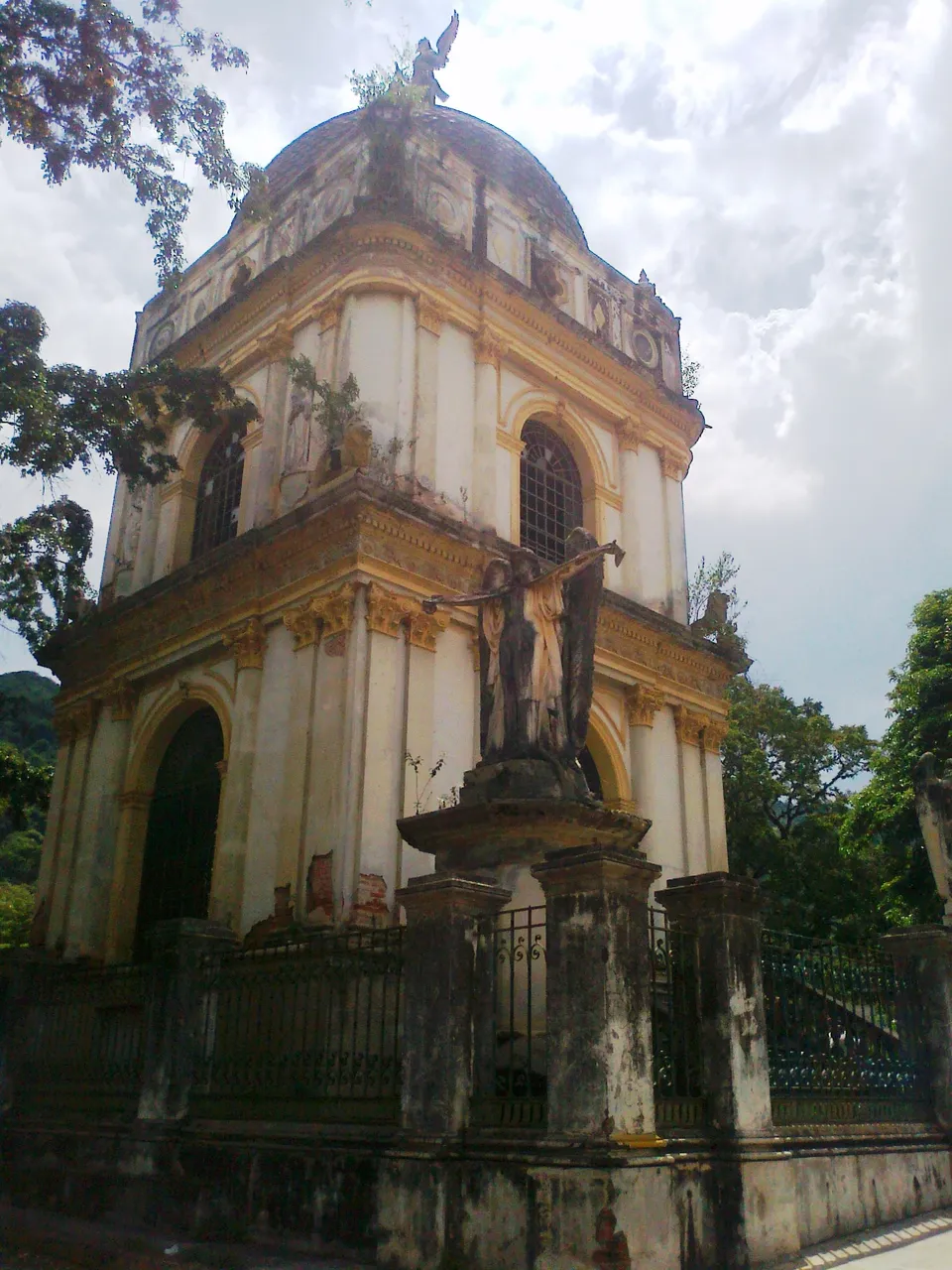
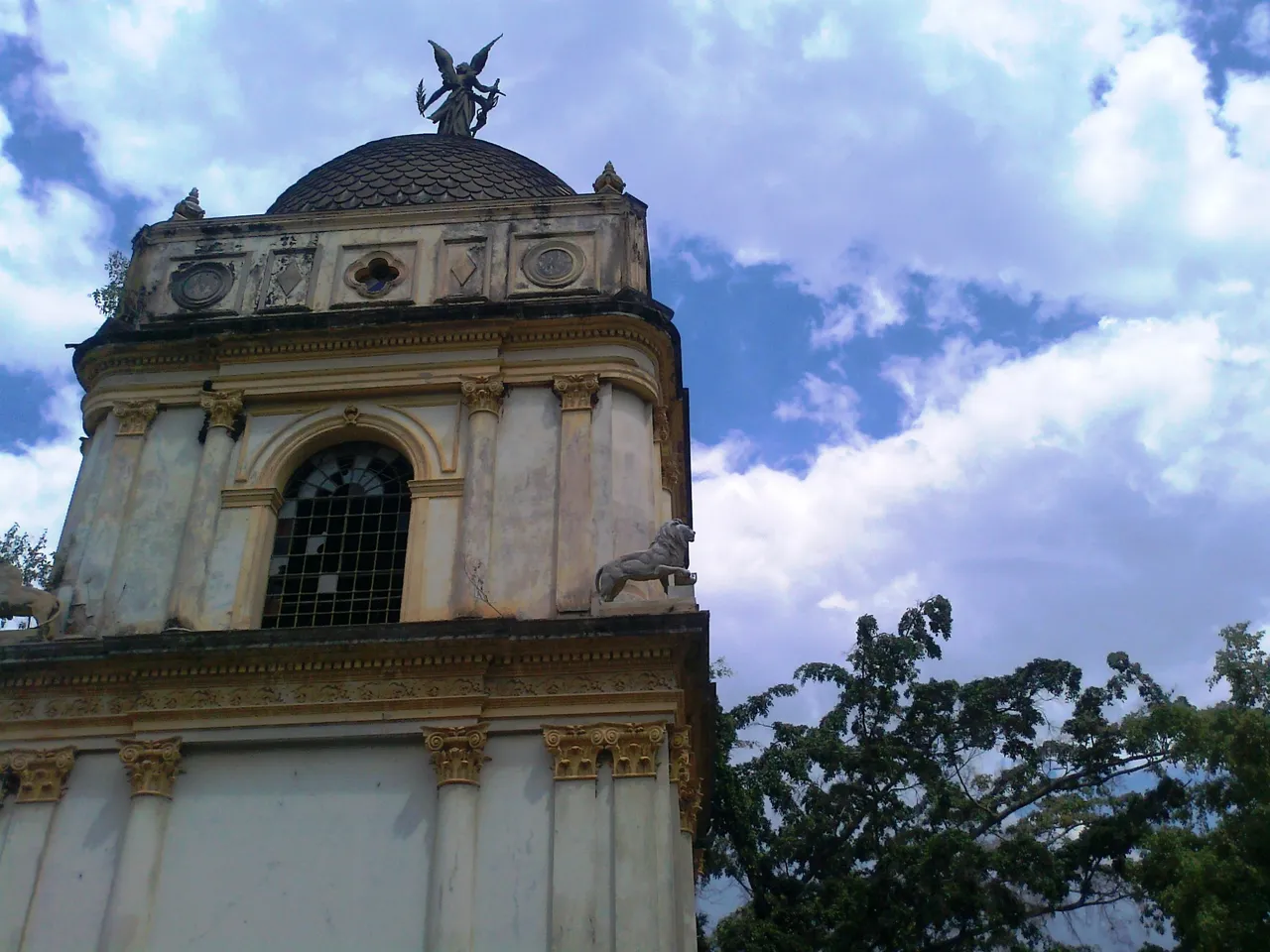
Están también las tumbas de muertos no tan célebres pero muy visitados por la gente como la joven estudiante María Francia, cuya tumba está llena de cuadernos, uniformes de bachillerato y otras cosas en agradecimiento a favores concedidos, ya que los estudiantes le piden para que los ayude a graduarse.
There are also the graves of the dead not so famous but very visited by people such as the young student María Francia, whose grave is full of notebooks, high school uniforms and other things in gratitude for favors granted since the students ask her to help them to graduate.
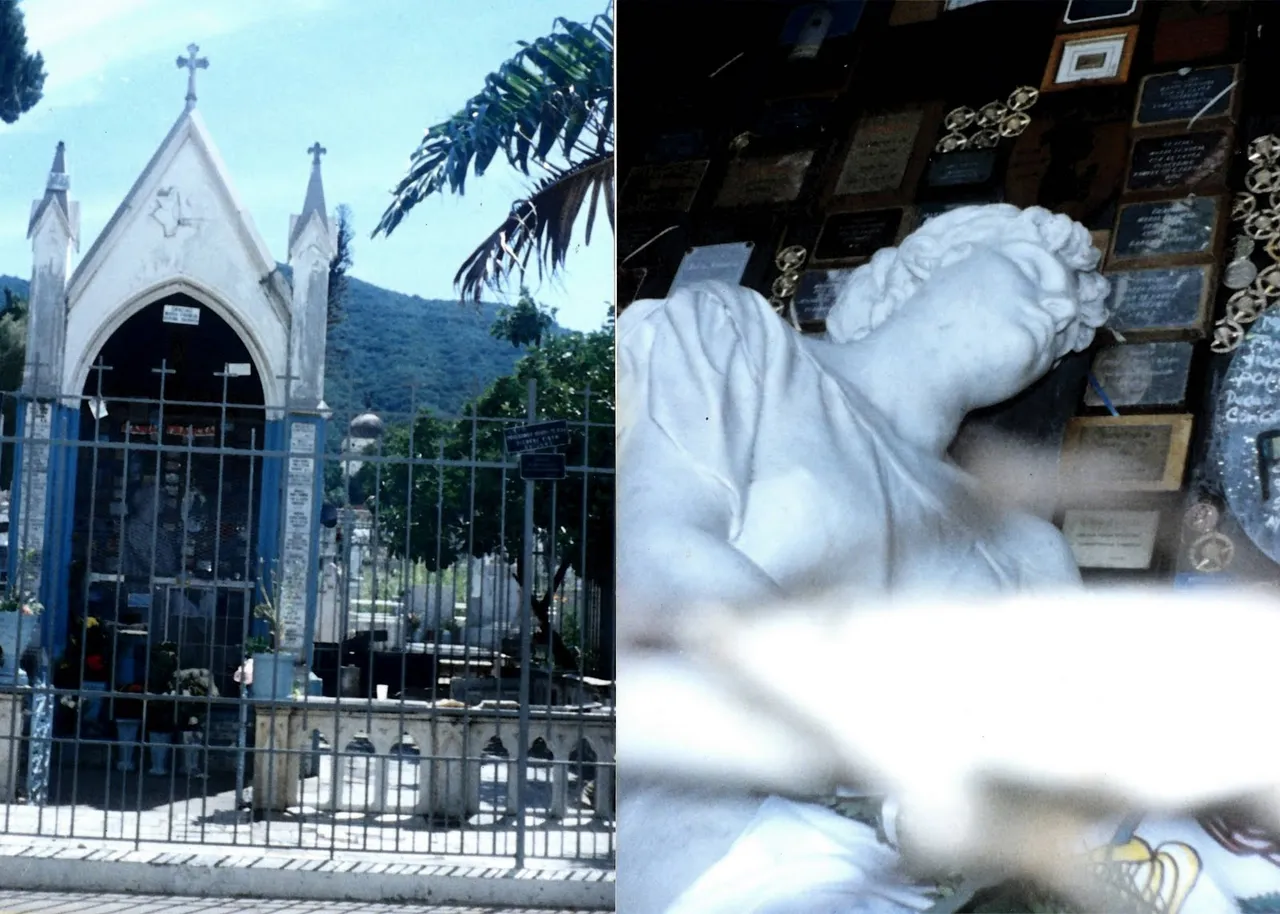
Otra de las tumbas más visitadas es la de Victorino Ponce, que es además muy pintoresca porque allí hay un gran árbol que tiene guindadas en sus ramas pequeñas casitas de colores y en su tronco muchas placas de agradecimiento y es que este difunto quien en vida fue albañil y carpintero ayudó a muchas personas pobres construyéndoles sus casas gratuitamente, por eso la gente le pide para que los ayude a tener su casa propia y visto la cantidad de agradecimientos, cumple.
Another of the most visited tombs is that of Victorino Ponce, which is also very picturesque because there is a large tree that has small colored houses on its branches and many plaques of gratitude on its trunk and it is that this deceased who in life was bricklayer and carpenter helped many poor people by building their houses for free, that's why people ask him to help them have their own house and seeing the amount of thanks, he complies.
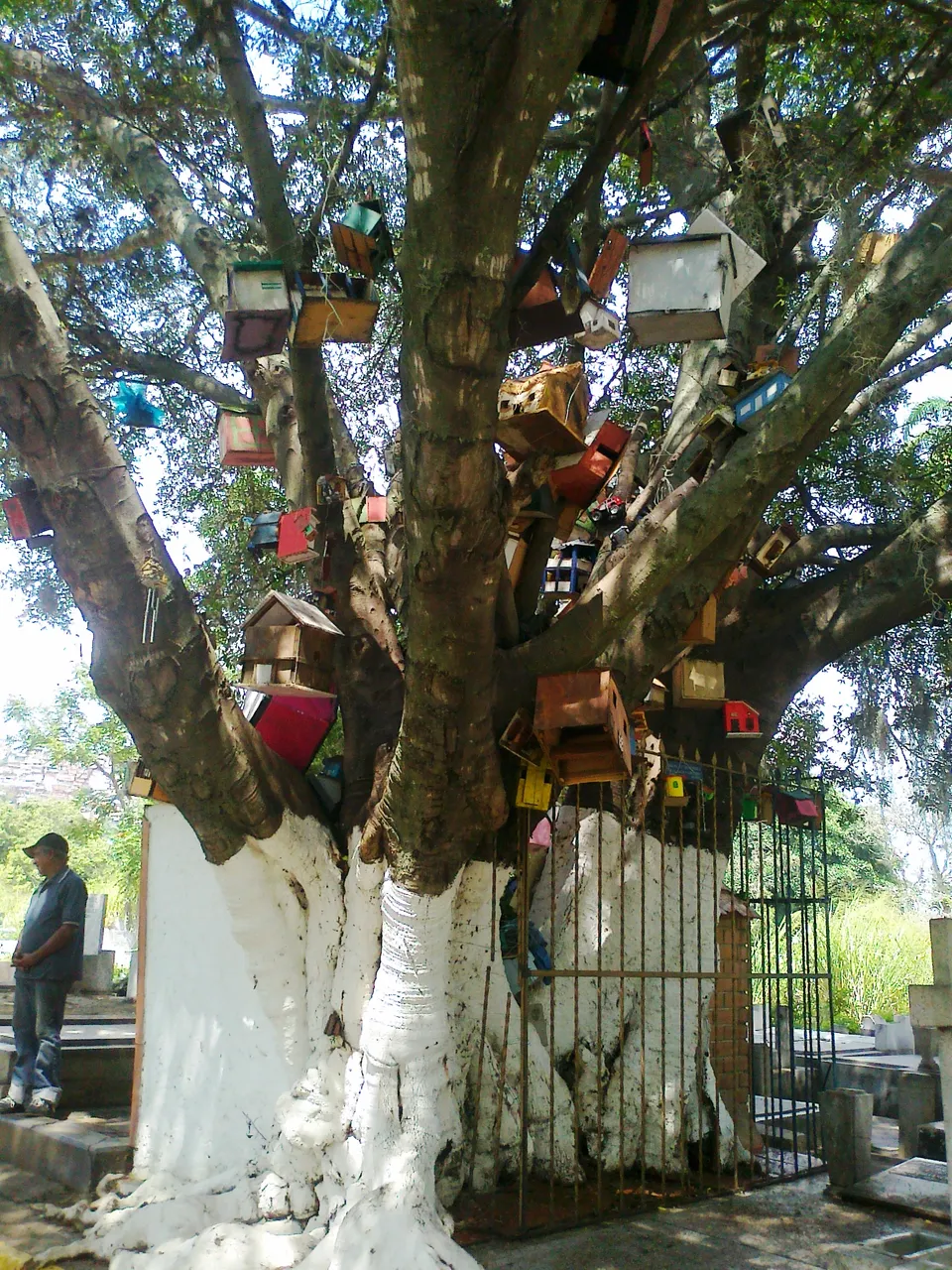
No hay que olvidar otra tumba muy concurrida, la de Ismael, quien lidera la Corte Malandra o Corte Calé, formada por más de doce delincuentes de la década de 1960 de quienes se dice robaban a los adinerados para dárselo a los pobres, algo así como unos Robin Hood. En este altar hay varias figuras de yeso de ellos y ofrendas florales y de otro tipo como licor y tabaco, todo para pedir por protección y otras cosas.
We must not forget another very crowded grave, that of Ismael, who leads the Malandra Court or Calé Court, made up of more than twelve criminals from the 1960s, it is said that they robbed the rich to give to the poor, something like Robin Hood. On this altar there are several plaster figures of them and floral and other offerings such as liquor and tobacco, all to ask for protection and other things.
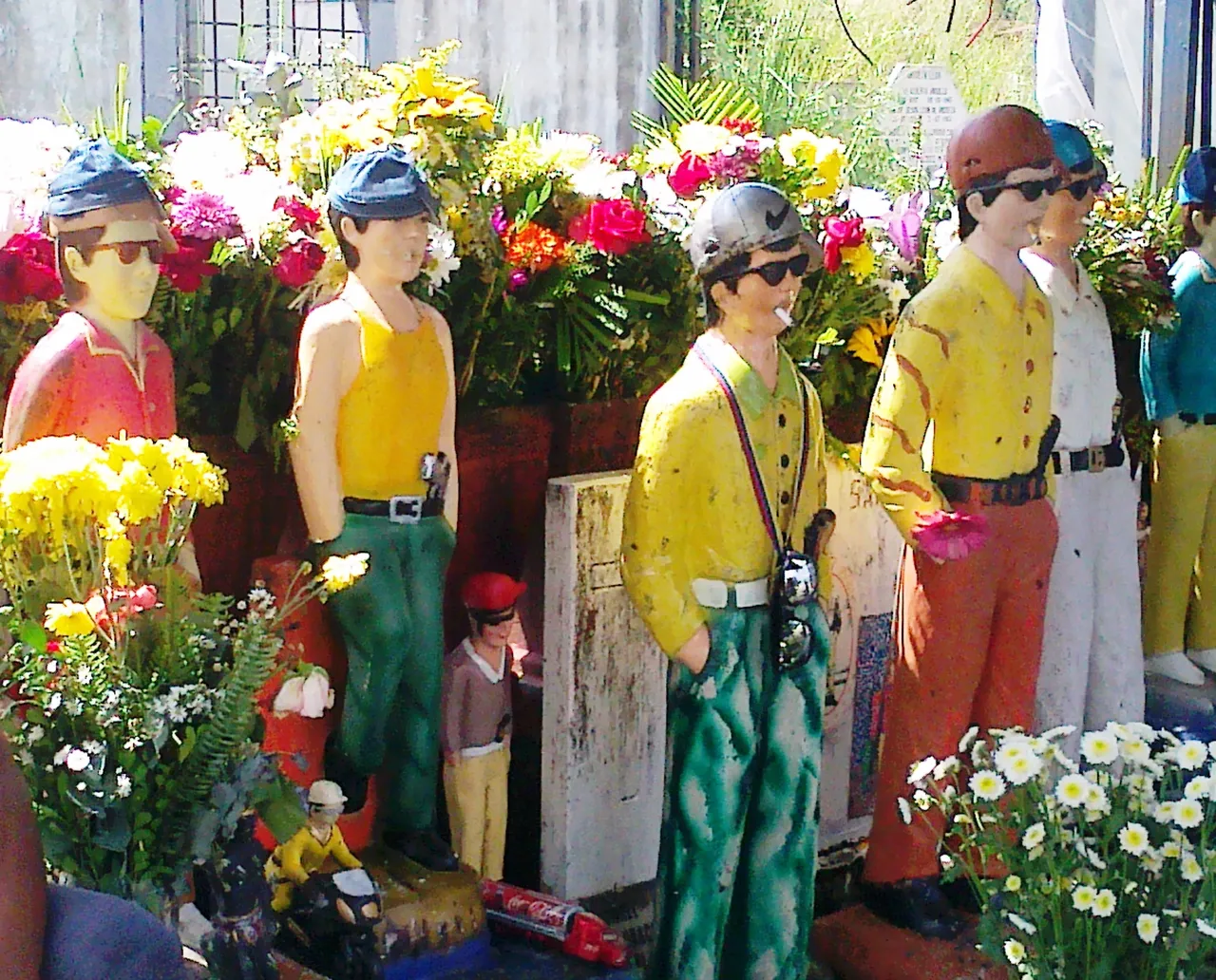
Como en otras partes del mundo con cementerios de este tipo declarados patrimonio histórico y cultural, aquí se implementó durante algún tiempo la visita guiada por las tumbas más emblemáticas, sin embargo debido a los constantes problemas de mantenimiento y seguridad, el proyecto no se mantuvo.
As in other parts of the world with cemeteries of this type declared historical and cultural heritage, here the guided tour of the most emblematic tombs was implemented for some time, however due to constant maintenance and security problems, the project was not maintained.
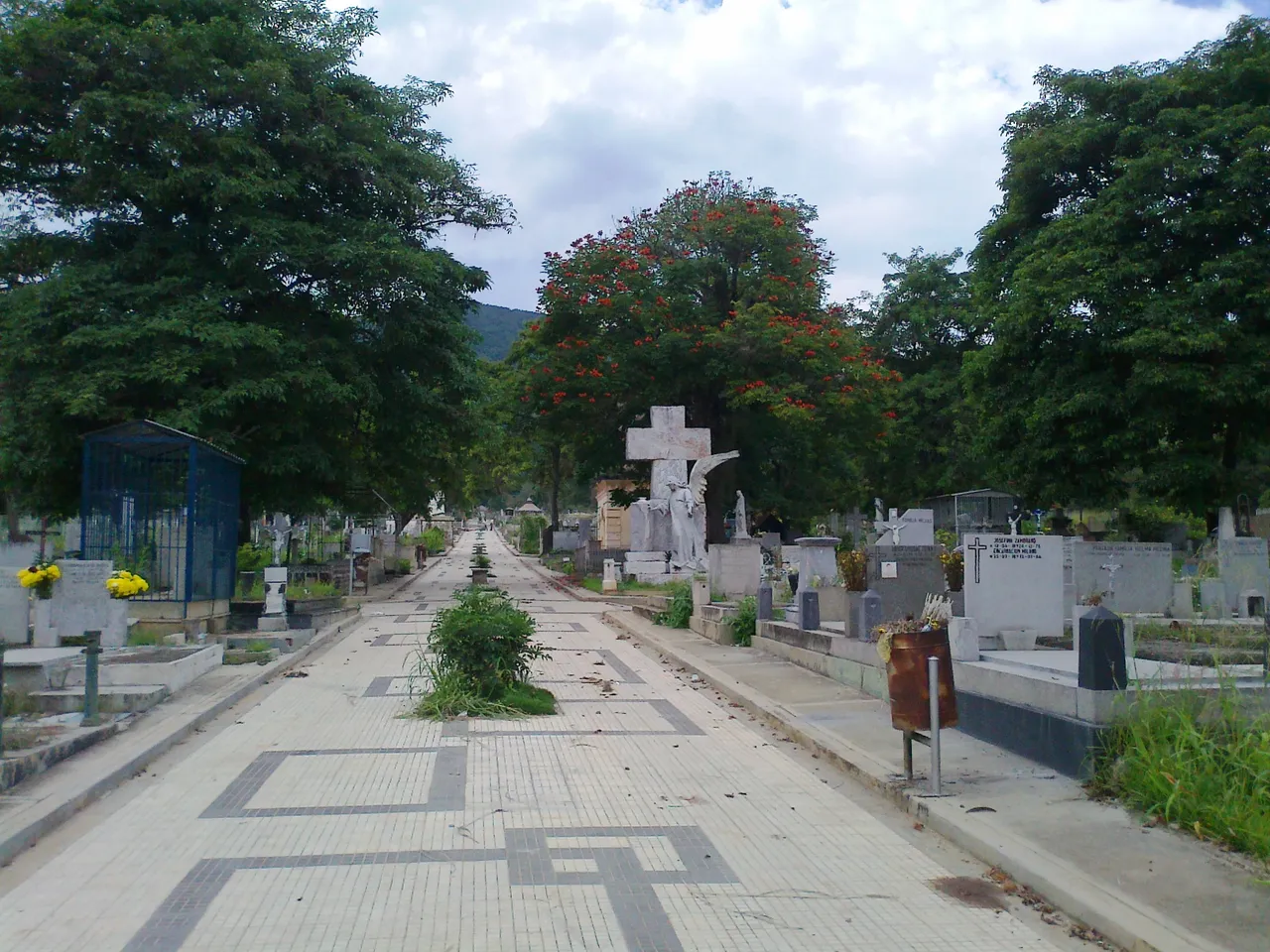
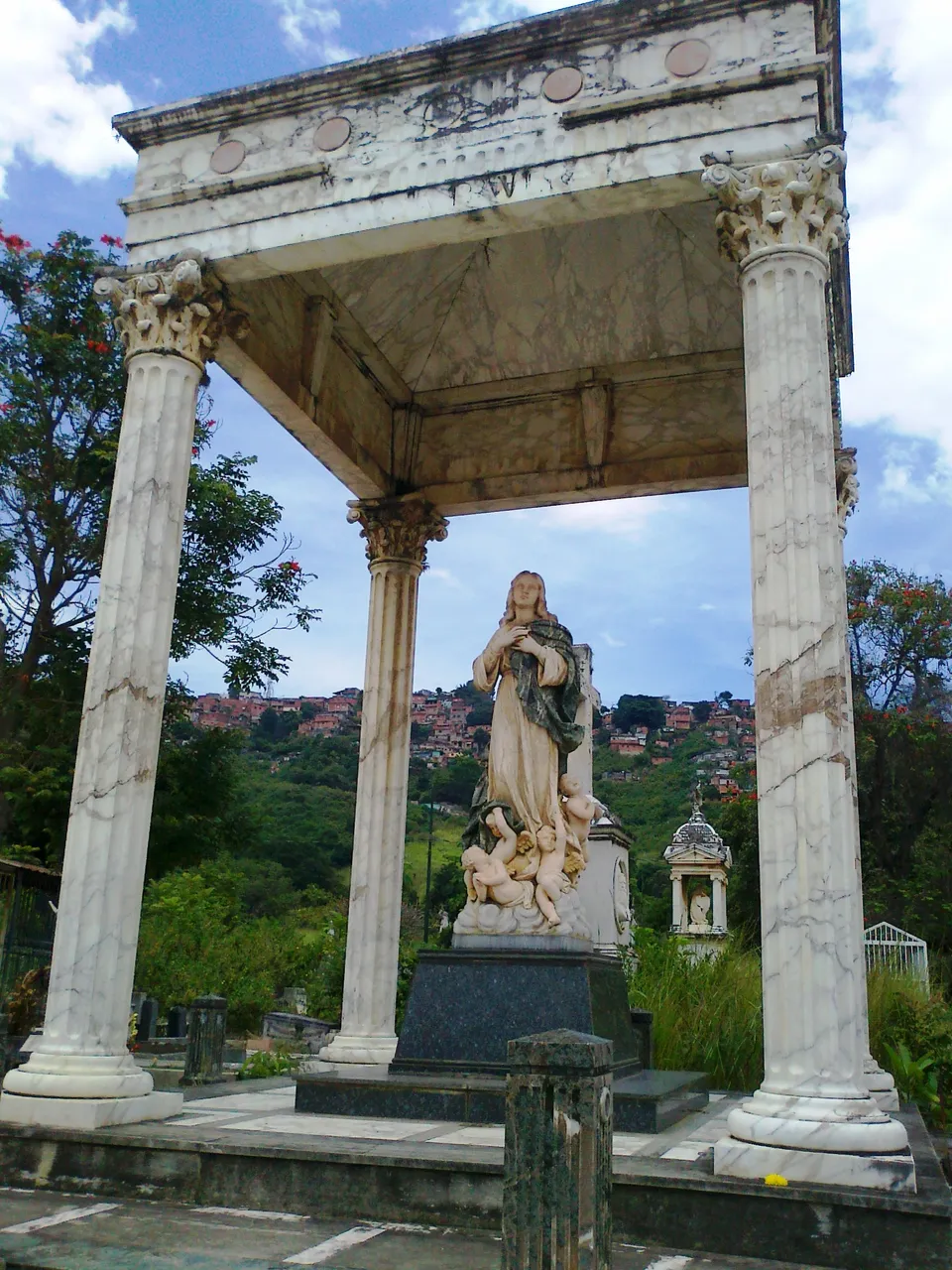
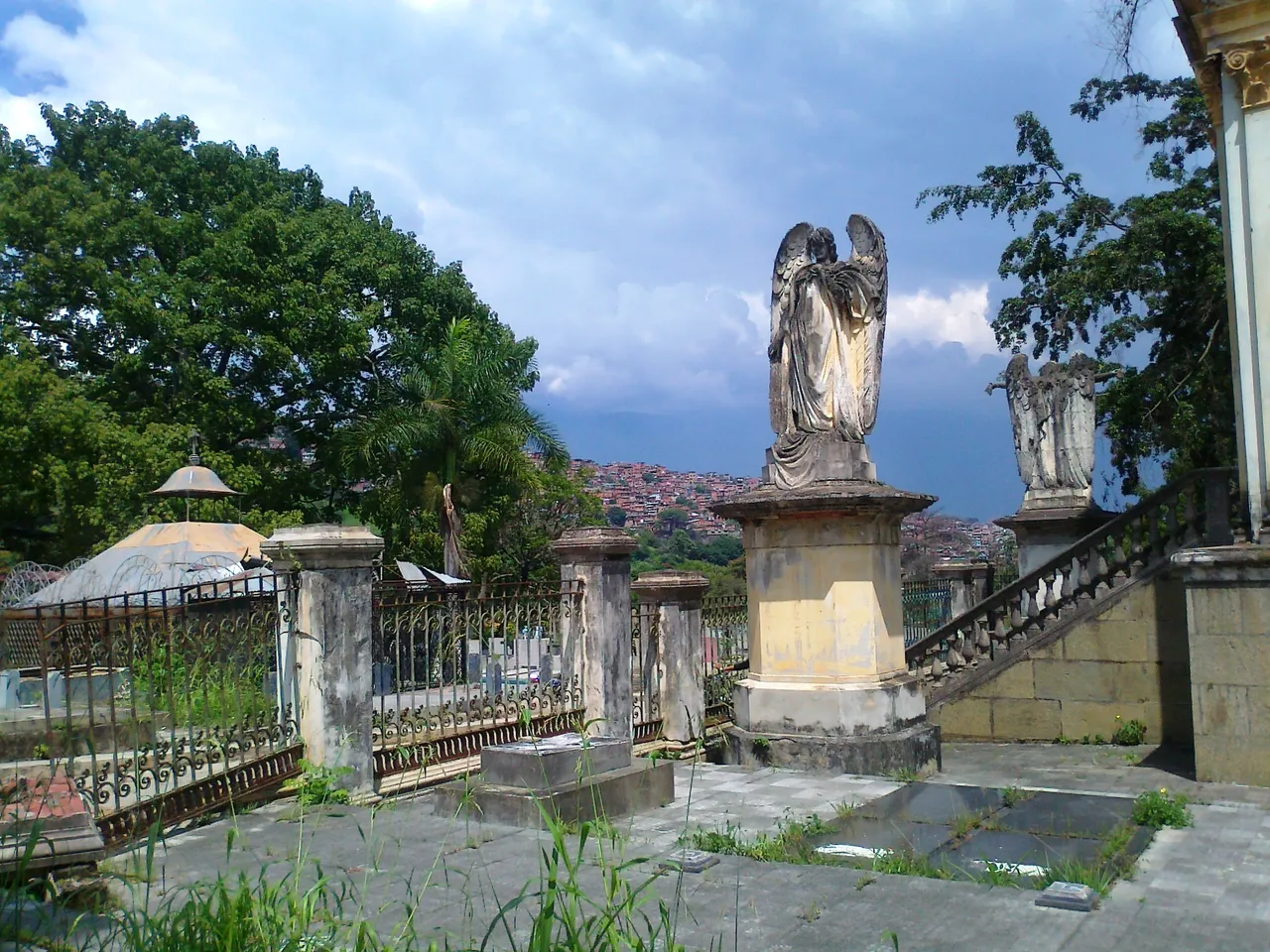
Según nos contaron, una de las actividades que antes se realizaba aquí era la visita de los estudiantes de bellas artes, quienes acudían para dibujar las obras de arte que posee el cementerio, unas 280, aunque actualmente quedan menos de 100 debido a que unas fueron robadas y otras destruidas por el vandalismo.
As they told us, one of the activities that used to take place here was the visit of the fine arts students, who came to draw the works of art that the cemetery has, about 280, although currently there are less than 100 because some were stolen and others destroyed by vandalism.
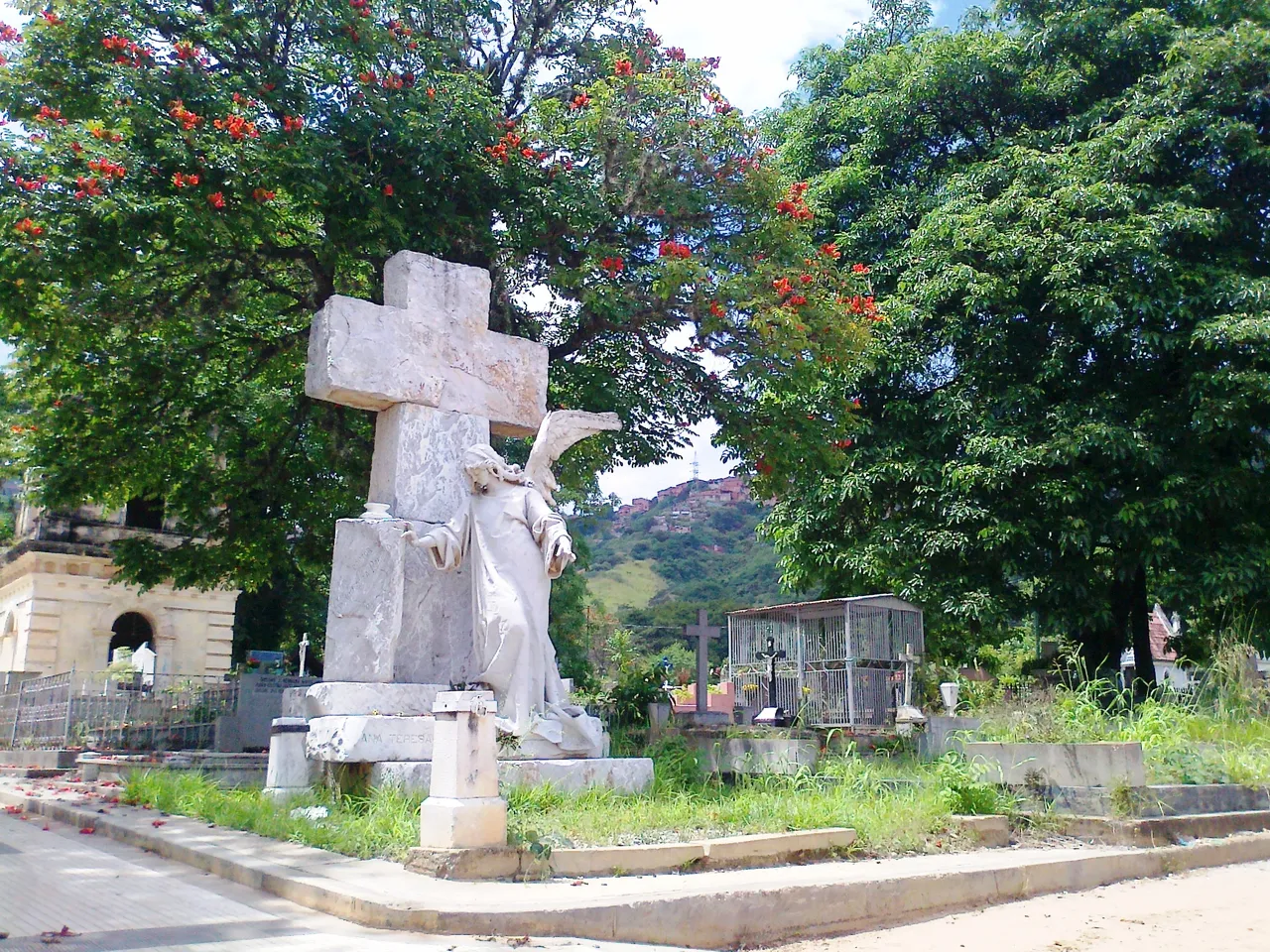
La profanación de tumbas también ha sido parte de la historia de este cementerio, algunos trabajadores nos dijeron que eso ha existido siempre allí y que en una época las abrían para llevarse los dientes de oro de los muertos y más recientemente el motivo es llevarse huesos o cráneos para ceremonias de brujería o quién sabe…
The desecration of graves has also been part of the history of this cemetery, some workers told us that this has always existed there and that at one time they opened them to take the gold teeth of the dead and more recently the reason is to take bones or skulls for witchcraft ceremonies or who knows ...
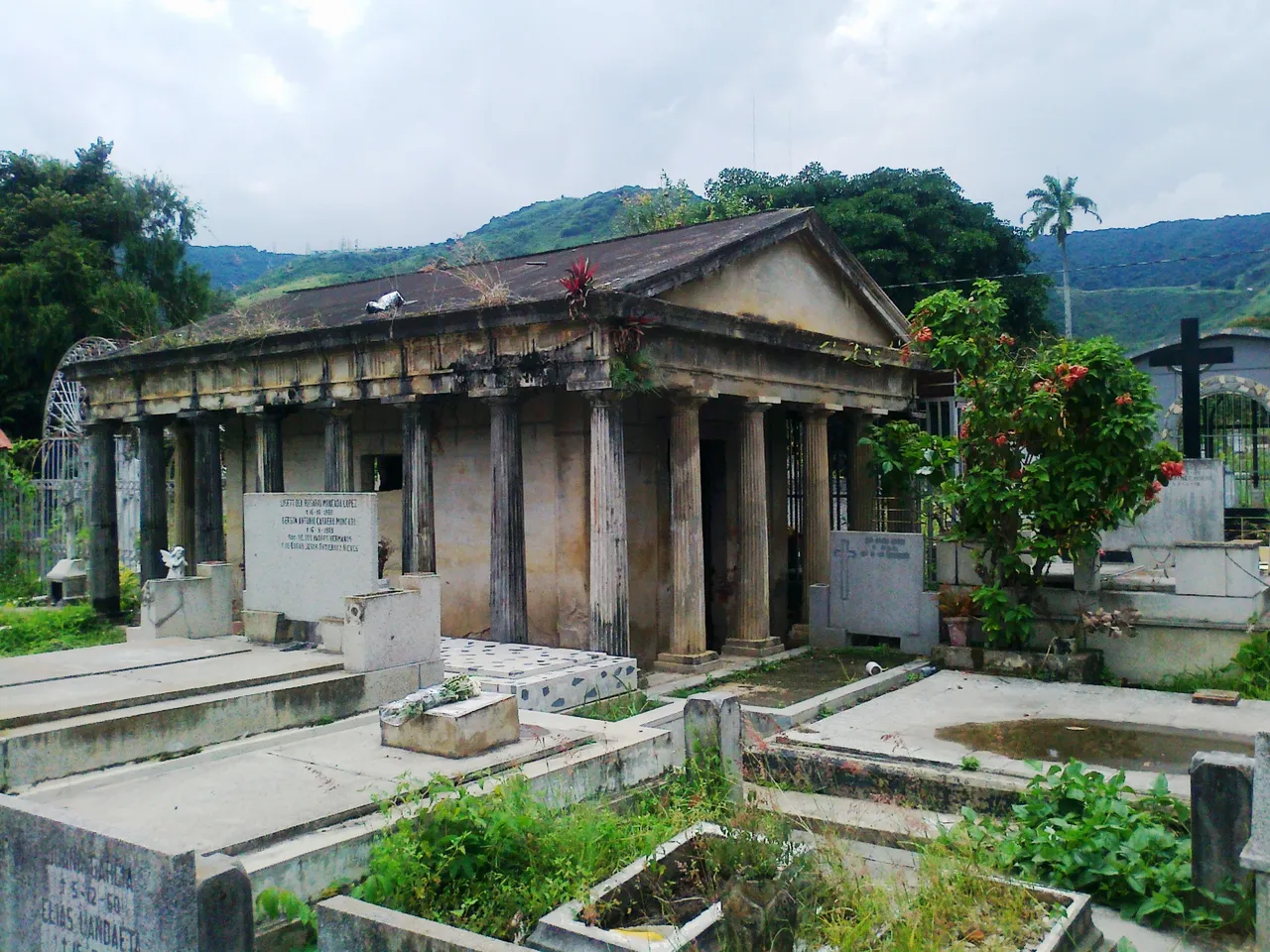
El Cementerio General del Sur también ha sido testigo de momentos de dolor colectivos para Venezuela, como por ejemplo cuando en 1918 se desató la epidemia de gripe española en Caracas. Se cuenta que en esos momentos relució la solidaridad de los trabajadores del camposanto, quienes enterraron a todos los fallecidos por esta enfermedad, hasta 40 diarios, sin cobrarles nada a sus familiares. Lo mismo ocurrió cuando hubo grandes desastres como el terremoto de 1967, el incendio en la central termoeléctrica de Tacoa en 1982 o el estallido social conocido como El Caracazo en 1989.
The General Cemetery of the South has also witnessed moments of collective pain for Venezuela, such as when in 1918 the Spanish flu epidemic broke out in Caracas. It is said that in those moments the solidarity of the cemetery workers shone, who buried all those who died from this disease, up to 40 daily, without charging their relatives anything. The same happened when there were major disasters such as the 1967 earthquake, the fire at the Tacoa thermoelectric plant in 1982 or the social outbreak known as El Caracazo in 1989.
En este último suceso hubo miles de personas ajusticiadas por los cuerpos de seguridad y las Fuerzas Armadas que fueron trasladadas y enterradas en una zona de la necrópolis conocida como La Peste, arriba en la montaña.
In this last event there were thousands of people executed by the security forces and the Armed Forces who were transferred and buried in an area of the necropolis known as La Peste (The Plague), up on the mountain.

Durante mi visita un habitante de los alrededores del Cementerio General del Sur me contó cómo a la medianoche veía llegar los camiones con muertos al lugar. Muchos de esos cuerpos sepultados en La Peste permanecen sin identificar.
During my visit, an inhabitant of the surroundings of the General Cemetery of the South told me how at midnight he saw the trucks with the dead arrive at the place. Many of those bodies buried in La Peste remain unidentified.
Sin duda, este lugar de reposo eterno, con todas las historias que posee y la fotogenia que aún le queda, es muy interesante para visitar.
Without a doubt, this place of eternal rest, with all the stories it possesses and the photogenicity that still remains, is very interesting to visit.
Excepto las mencionadas con su fuente, las demás fotos fueron tomadas por mí con un teléfono celular Nokia X3-02 / Except those mentioned with their source, the other photos were taken by me with a Nokia X3-02 cell phone
